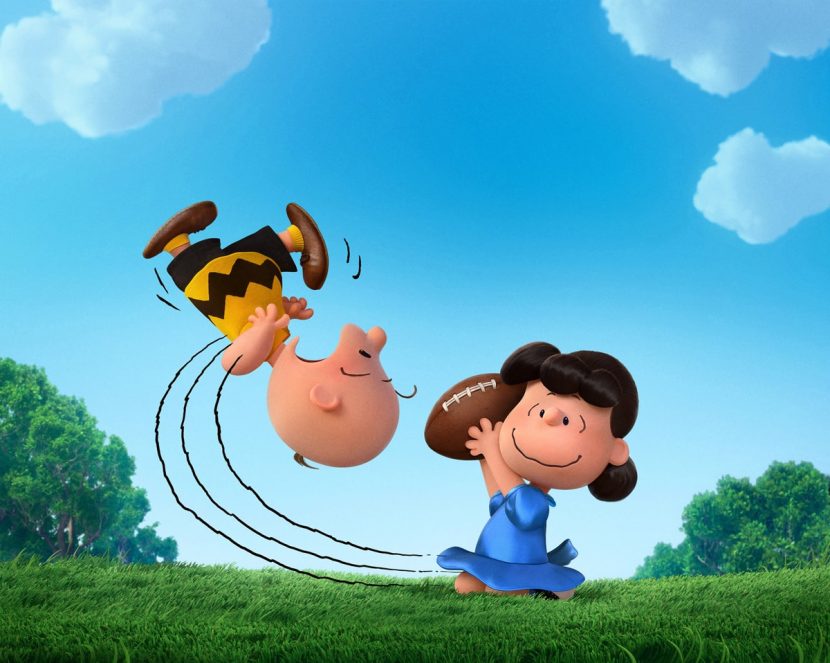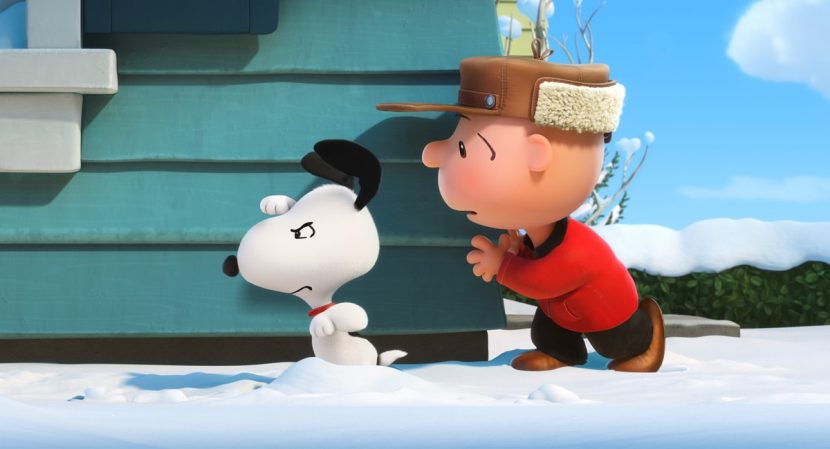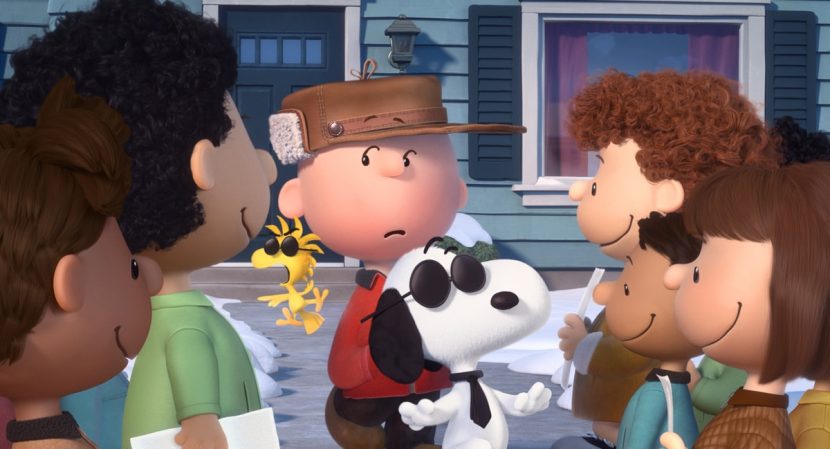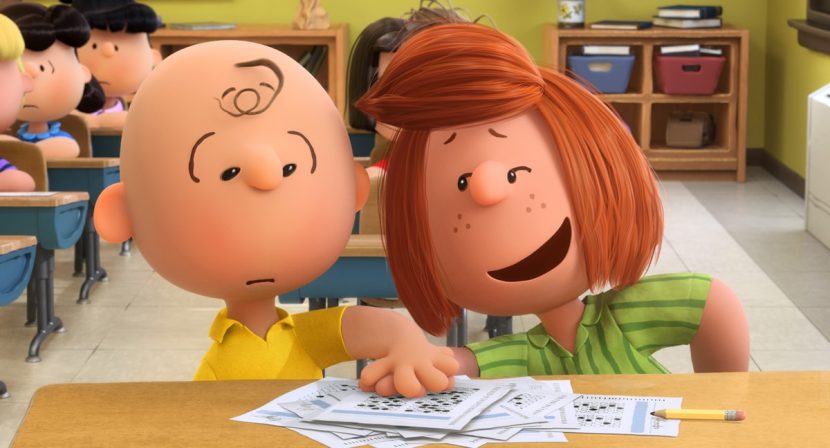‘When in doubt, go back to the strip.’ That was The Peanuts Movie director Steve Martino’s mantra during production on Blue Sky Studio’s newest CG animated film, according to animation supervisor Scott Carroll, who fxguide spoke to recently at the VIEW Conference in Italy.
The strip Martino is referring to is, of course, Charles M. Schulz’s beloved Peanuts comic starring Charlie Brown, Snoopy and a host of familiar neighborhood characters. Blue Sky was determined to stay faithful to the 2D world of Peanuts despite the 3D world in which the film would exist. That meant coming up with a wave of artistic and technical solutions to still ensure the studio would always be going ‘back to the strip’.
So what were those 2D aspects of the comic strip (and several television specials) that Blue Sky wanted to preserve and how did studio tackle them in 3D?
While researching 50 years of Peanuts strips, Blue Sky quickly realized that Schultz (nicknamed ‘Sparky’) drew his characters from only limited camera angles and in proportions that worked for the particular frame they were in. But translating a Sparky-drawn character directly to 3D would immediately cause strange in-betweens and interpolations and cause the characters to go off-model. So Blue Sky had to work out 3D ways to echo the 2D drawings. The solution was effectively to retain thse front-on and profile views and occasionally sculpt and animate specifically to the camera.
“We created a front three-quarters view, a front three-quarter profile, a heads-up view for screams, a head-down front-on view and a three-quarter back for over the shoulder shots,” explains Carroll, who shared animation supervision duties with Nick Bruno. “We called the front three-quarter view the ‘Sparky’ view. You had to basically be in the range of seven degrees off-center otherwise the model started to fall apart. The nose would be squashed in a little bit and it would go off-model very quickly.”
Another crucial aspect of the characters’ strip-like appearance was their facial expressions. These needed to retain a hand-drawn feel, but to accomplish that they also had to remain almost 2D in nature, a tricky proposition to add to 3D character models (even with the limited poses that would be used). So how did Blue Sky solve this? They created a way for the eyes, eyebrows and surrounding expression lines, which were called ‘sixes’, ‘nines’, and ‘periwinkles’, to slide around on the face of the characters during animation. The required a new facial rig. “What we did was shrinkwrap the eye mask area so these things slide across the surface,” explains Carroll. “We didn’t want to be completely free form on there because you would get all kinds of weird penetrations or it would completely pull off the face and you’d get weird shadows.”
The approach was dubbed UVN transformation, and came about in partnership with Autodesk and is now available inside Maya. “It’s almost how we’d do texture mapping,” says Carroll. “We’d be creating all the shapes off of a UV grid and applying that to shrinkwrap around the head. So you’ve then got very smooth shapes in terms of how it deformed from a small mouth to a really big smile. This really great technique was the result of back and forth with rigging when we were in pre-production. It took a lot of brainstorming – how do we solve this problem, since the way we normally do business is not going to hold up here.”
A key part of the 3D animation would require replication of the extreme poses often seen in the strips. Charlie Brown might, for example, go from standing to being upside down on his head in very few frames. For different poses, then, the character model may not have had a consistent pivot point, such as between the head and neck. Blue Sky’s solution to this problem came from making each character out of multiple meshes – giving animators additional degrees of freedom.
But to make those degrees of freedom usable, the studio combined its hybrid character rig with a tool called ‘Suction Cup’. According to a Blue Sky talk presented at SIGGRAPH 2015, “this maintained smooth connection between multiple subdivision surfaces. This both supports the unusual rotate-in-place capability and also allows us to share a single body rig across different characters. Finally, our in-house renderer CGIStudio uses fill surfaces to combine these pieces using CSG so that subsurface scattering behaves in a way that is consistent with a single, solid piece of geometry.” (Heller, et al)
 Those extreme poses in the strips were sometimes communicated with the help of motion lines. While fast motion might typically be realized in 3D animation using motion blur, this was not something Blue Sky wanted to introduce in the Peanuts world. The animation style was also being done on 2s (ie holding a pose for two frames) which meant the normal way of calculating motion blur would not be possible. So, like the strips, animators introduced 2D methods of showing motion blur by creating multiple body parts, smear frames or motion ‘pen lines’ that would be composited into the shots.
Those extreme poses in the strips were sometimes communicated with the help of motion lines. While fast motion might typically be realized in 3D animation using motion blur, this was not something Blue Sky wanted to introduce in the Peanuts world. The animation style was also being done on 2s (ie holding a pose for two frames) which meant the normal way of calculating motion blur would not be possible. So, like the strips, animators introduced 2D methods of showing motion blur by creating multiple body parts, smear frames or motion ‘pen lines’ that would be composited into the shots.
“For the motion trails,” outlines Carroll, “the animator would block out the shot with a rough pass of what we called ‘Sparky’ lines. All of the lines were added by the same animator who animated the shot in 3D. They had to learn the 2D animation package and do all of the 2D animation themselves. So they would do a rough pass of the motion lines and the last stage is a final polish for the pen thickness and wobbly line which gets comp’d on later.”
The multiple limbs – multiples – and smear frames drew on traditional animation techniques that utilized sub-parts of the characters. For this, Blue Sky established a ‘Ghost Limb’ method to achieve an “interactive display of the relevant parts of the full character rig for animators and propagates this visibility information on to the renderer. Similar to Suction Cup, the renderer uses fill surfaces to construct solids from the individual limbs, allowing materials with scattering to behave properly.” (Heller, et al)
With these methods in place, Blue Sky now had a way to represent the 2D aesthetic in a 3D form. The studio even tinkered too with their volumetric effects approaches to give them a more hand-drawn feel (this was how Pigpen’s dirt cloud was realized, for example). Of course, those tools were simply that – just tools for the artists to help realize the characters, and animators in particular would always go ‘back to the strips’ for inspiration. “It was such an amazing project,” says Scott Carrolll. “It was also a big learning process for us, taking 2D animation principles and applying them to our animation. The style of the film is very different than a typical 3D computer animated film, but I think it stays faithful to what everyone knows and loves.”
Images and clips copyright © 2015 Twentieth Century Fox Film Corporation.



